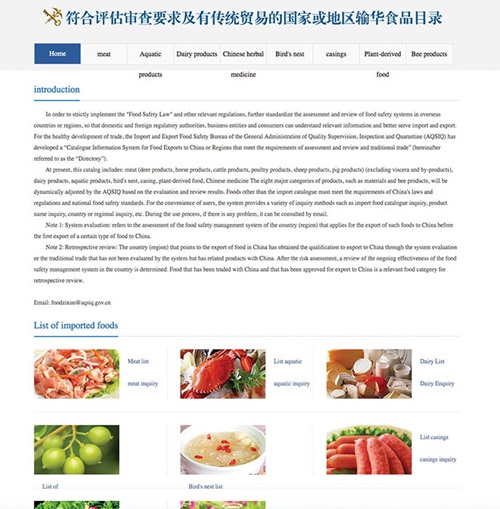With no tariffs on Australian seafood exported to China, government and industry groups are working together to expand the list of eligible products
By Peter Horvat, general manager communications, trade and marketing, FRDC
 The list of species approved for export from Australia to China can be viewed at
The list of species approved for export from Australia to China can be viewed athttp://114.255.252.130:61115/AP_NameListSearch.aspx?type=%u6c34%u4ea7 (Google Chrome translation).
China is the world’s biggest exporter of seafood, in both volume and value, as well as a prominent importer of Australian seafood products. To improve access to this high-value market, the Australian Government continues to work with the Australian seafood industry on a range of trade-related issues.
A notable success has been the negotiation of the China–Australia Free Trade Agreement (ChAFTA), which led to the elimination of all tariffs on Australian seafood exported to China as of 1 January 2019.
However, these tariff-free products are restricted to those named on the Chinese Government’s list of approved aquatic species eligible for export from Australia to China. The Chinese Government maintains separate country-specific eligible lists for live and non-viable (not live) seafood products for human consumption. If it is not on the list, it cannot be exported to China. The process to update the China list is also complex in terms of the information required and the time required to list additional species.
Industry priorities
Working with the Department of Agriculture to expand the list is a priority for the Australian seafood industry. In mid-2018 the Department of Agriculture supported an FRDC survey of seafood to identify species of commercial significance to nominate for inclusion on the China list. This reflects the need to have broad and unified industry engagement on the additional species that Australia is seeking to export to China.
The survey asked exporters to outline potential trade volumes, export values and known market interest for nominated species, and whether the species was a sustainable export. It identified 20 potential species, with significant commercial interest demonstrated for two: Stout Whiting (Sillago robusta) and Australian Salmon (Arripis trutta and Arripis truttaceus).
The General Administration of Customs of China (GACC) has previously considered submissions based on a history of trade, but this year it has advised that all submissions will be considered ‘new species applications’ and must include import risk assessment documentation.
The Department of Agriculture has asked the Seafood Trade Advisory Group (STAG) to build on the FRDC survey and facilitate industry agreement on the two priority species for an initial application for inclusion on China’s eligible species list.
This will involve a follow-up survey to update results in August 2019, followed by an industry prioritisation workshop in mid-September. Following the workshop, STAG will assist industry groups involved to prepare the required risk dossier for the two priority species agreed on.
The Department of Agriculture will submit the risk dossier with the applications to China for consideration. The STAG is working with five industry groups that have already signalled their interest to have new species added to the list. The template for the risk dossier can be downloaded from the STAG website.
The process for getting new species on the China list is complex; the key for industry will be to focus its efforts on the two agreed priorities. The FRDC is optimistic that with combined effort and focus, additional species can be added and trade opportunities enhanced.
For more information on Australia’s seafood export requirements to China click here.
What’s on the China list?
To view the Australian non-viable eligible aquatic products list:
- Open Google Chrome on your computer or mobile device.
- Visit the page here (it is in Chinese).
- When the Google Chrome translate option box opens in the top right-hand corner of the screen select ‘Translate’.
- This translate box also has an ‘Options’ menu. Clicking on this provides an option for ‘Always translate Chinese (Simplified)’, which will translate all subsequent pages you visit at the website, which might otherwise default to Chinese.
- On the webpage select the ‘List aquatic’ link, besides the photo of a crab. The aquatic list opens showing the North America list. Select the Oceania tab (second from left) to view the list of eligible Australian products.
More information
Jayne Gallagher (STAG Secretariat)
0438 336 712
jayne@honeyandfox.com.au
Seafood Trade Advisory Group





